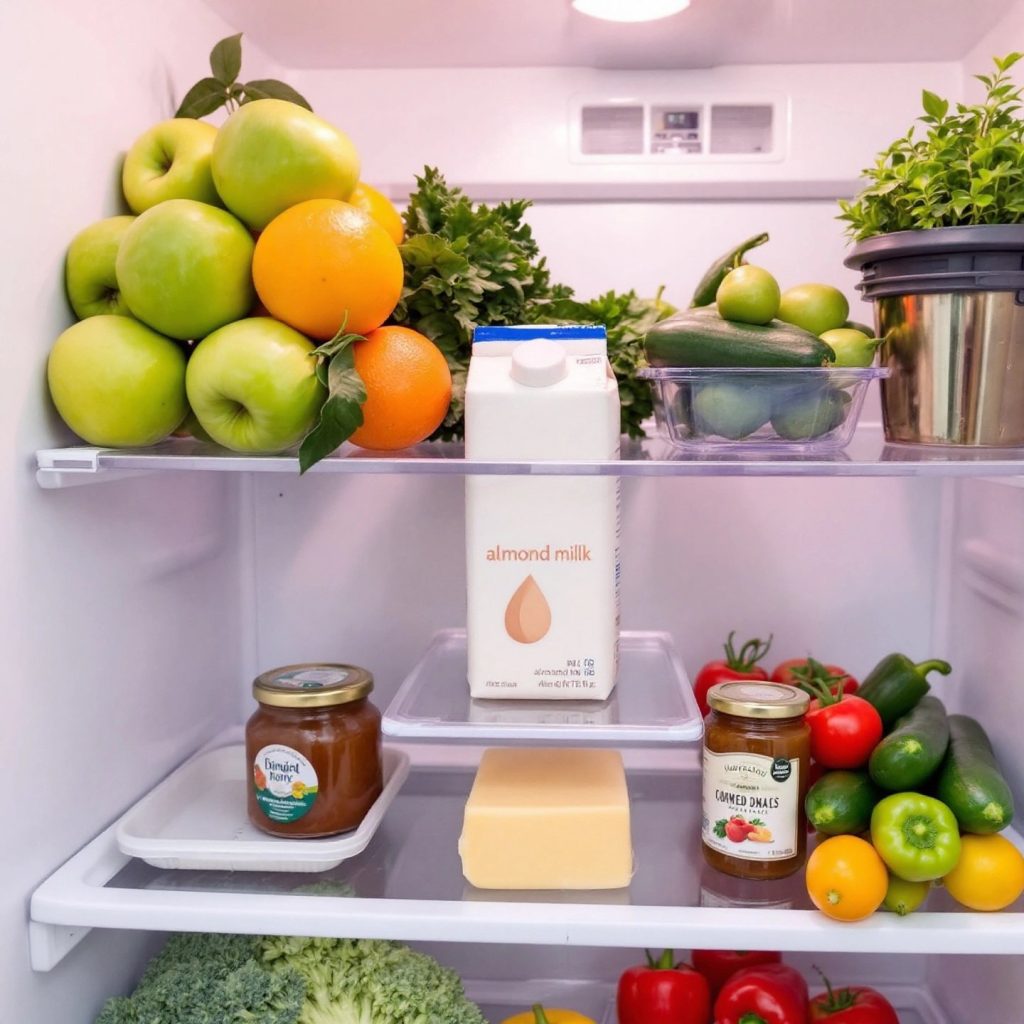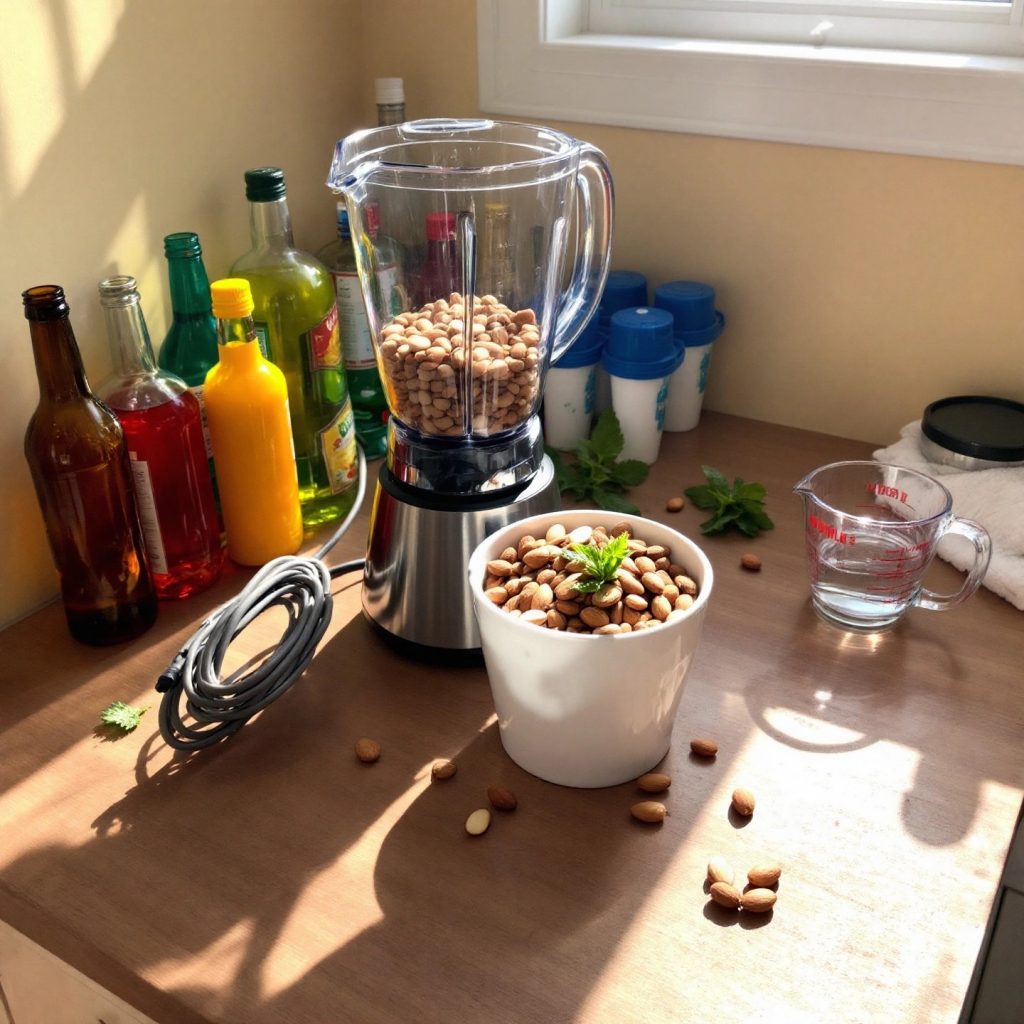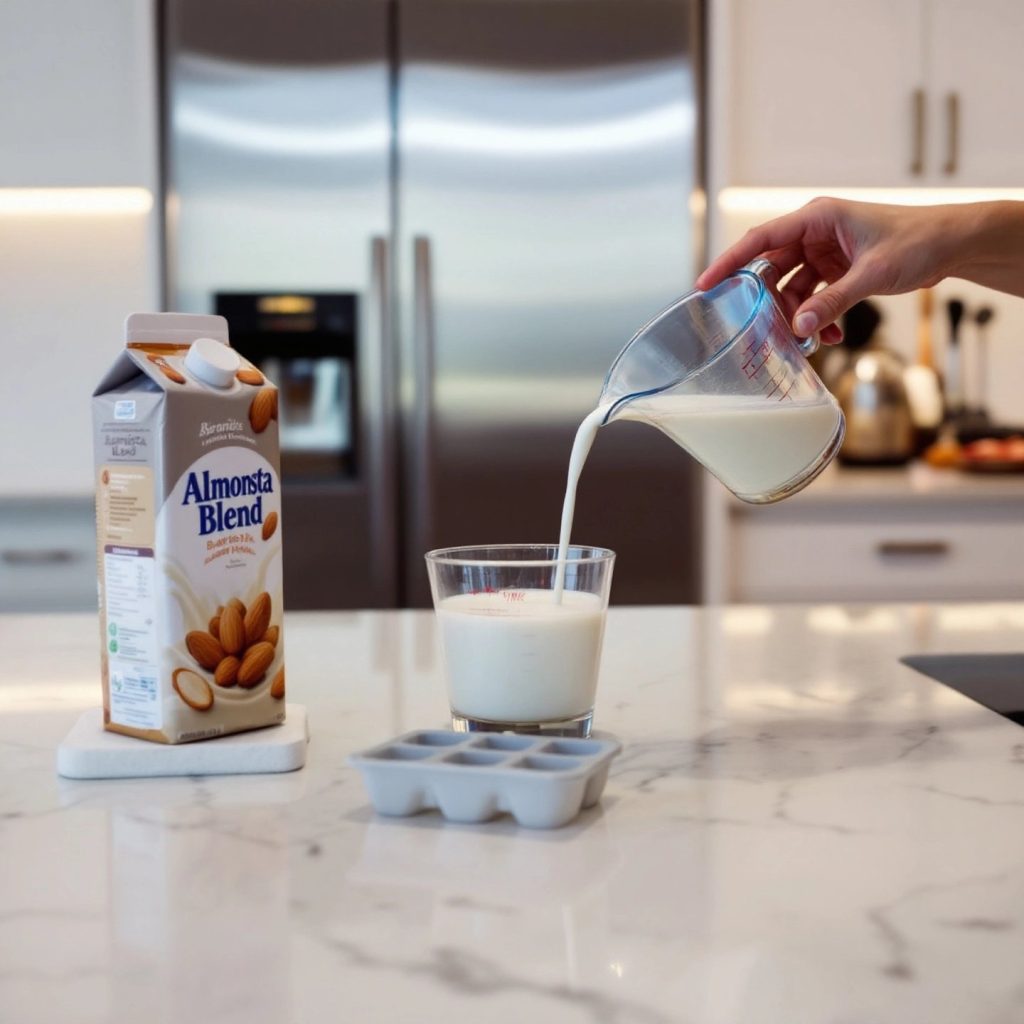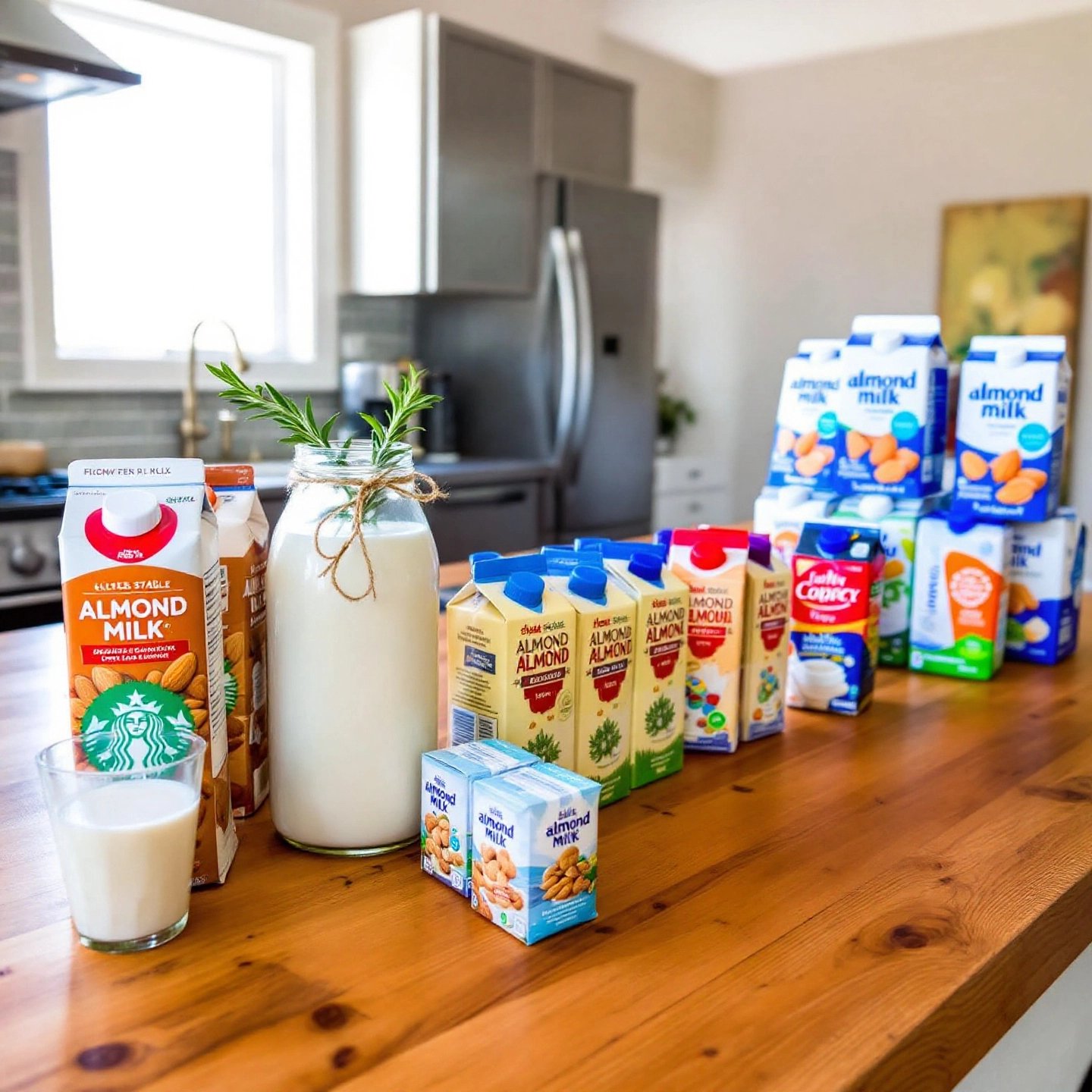Introduction: Understanding Almond Milk Shelf Life
Almond milk has surged in popularity as a preferred alternative to traditional dairy milk, largely due to its appealing taste and perceived health benefits. As a part of the growing plant-based movement, almond milk offers a versatile option for those seeking to reduce their dairy intake. However, understanding the almond milk shelf life is crucial to ensure both safety and quality.
There are several types of almond milk available, each with its own shelf life. Homemade almond milk, celebrated for its fresh taste and customizable ingredients, typically lasts about 3-5 days when refrigerated. Store-bought refrigerated almond milk, which undergoes pasteurization, can last 7-10 days once opened. Meanwhile, shelf-stable almond milk, which is ultra-pasteurized and packaged to withstand room temperature, can remain fresh for 1-2 months unopened, but should be consumed within 7-10 days after opening.
Proper storage is key to maximizing the freshness and safety of almond milk. Keeping it refrigerated, sealing it tightly, and consuming it within the recommended timeframes are essential practices. By adhering to these guidelines, you can enjoy the benefits of almond milk while minimizing the risk of spoilage.

Proper storage of refrigerated almond milk to maximize freshness (AI-generated)
Store-Bought Refrigerated Almond Milk: How Long Does It Last?
When it comes to refrigerated almond milk shelf life, understanding the nuances of storage and handling is essential. Unopened cartons of store-bought refrigerated almond milk can typically last 7-10 days past the printed date when stored properly in the fridge. However, once opened, it should be consumed within 7-10 days to ensure optimal freshness and safety. This timeframe is crucial because exposure to air and varying temperatures can accelerate spoilage.
Factors Affecting Shelf Life
Several factors can impact how long your almond milk stays fresh. Temperature fluctuations, such as leaving the carton out of the fridge for extended periods, can shorten its shelf life. Additionally, contamination from using unclean utensils can introduce bacteria, leading to quicker spoilage. To avoid these issues, always store almond milk at or below 40°F (4°C) and use clean utensils when pouring.
Storage Tips for Maximum Freshness
To maximize the freshness of your almond milk, ensure that it is stored in an airtight container to minimize exposure to air. Keeping it away from strong-smelling foods in the refrigerator can also prevent it from absorbing unwanted odors. If you find yourself with more almond milk than you can consume within the recommended timeframe, consider freezing it. While freezing can alter its texture, it can be a useful method for extending its usability, especially if you plan to use it in smoothies or cooking.
Understanding these storage guidelines not only helps in maintaining the quality of your almond milk but also encourages exploring the joy of making your own plant-based milk at home. Homemade options offer a fresh taste and allow for ingredient control, making it a rewarding endeavor for those interested in plant-based diets.
Shelf-Stable Almond Milk: Longevity and Storage Tips
Shelf-stable almond milk offers a convenient option for those who prefer to stock up without worrying about immediate refrigeration. This type of almond milk is typically packaged in aseptic cartons, allowing it to remain fresh for 1-2 months when stored in a cool, dark pantry. The key to its extended shelf life lies in the UHT pasteurization process, which involves heating the milk to a high temperature to eliminate bacteria and extend its longevity.
Understanding UHT Pasteurization
Ultra-high temperature (UHT) pasteurization is a critical factor in the shelf stability of almond milk. By heating the milk to approximately 280°F (138°C) for just a few seconds, UHT effectively kills any harmful bacteria, ensuring that the milk remains safe to consume even after months of storage. This method not only extends the shelf life but also preserves the nutritional integrity of the almond milk, making it a practical choice for long-term storage without significant flavor loss.
Proper Storage Before and After Opening
For unopened shelf-stable almond milk, it’s important to keep the carton in a cool, dark place, away from direct sunlight and heat sources. Once opened, the milk should be transferred to the refrigerator and consumed within 7-10 days to maintain its freshness and safety. Always reseal the carton tightly after each use to prevent contamination and minimize exposure to air.
By understanding these storage tips, you can ensure that your shelf-stable almond milk remains fresh and delicious. Additionally, consider experimenting with homemade almond milk, which allows for customization and a fresh taste. This can also be a great opportunity to explore plant-based milk makers, enhancing your culinary experience and providing control over ingredients and shelf life.

Crafting homemade almond milk with fresh ingredients (AI-generated)
Homemade Almond Milk: Freshness and Storage Guidelines
For those who revel in crafting their own plant-based beverages, understanding how long homemade almond milk lasts is essential. Generally, fresh, homemade almond milk has a shorter shelf life compared to its store-bought counterparts, typically lasting about 3-5 days when stored correctly in the refrigerator. This reduced longevity is primarily due to the absence of preservatives and stabilizers found in commercial varieties.
Factors Affecting Fresh Almond Milk Shelf Life
The ingredients and preparation methods significantly influence the fresh almond milk shelf life. Using fresh, high-quality almonds and ensuring all equipment is thoroughly sterilized are crucial steps. Contamination is a common issue that can hasten spoilage, so it is vital to maintain cleanliness throughout the preparation process. Sterilizing bottles and using a fine mesh strainer instead of hands to extract the milk can also help extend its freshness. Learn more about these techniques.
Tips for Extending Shelf Life
To maximize the freshness of your homemade almond milk, consider these storage tips: use airtight glass or BPA-free plastic containers to store the milk, as these help prevent exposure to air and bacteria. Refrigerate the milk immediately after preparation and keep it at a consistent, cold temperature. Avoid leaving it out on the counter for extended periods, as temperature fluctuations can encourage bacterial growth.
For those looking to enjoy homemade almond milk over a longer period, freezing is a viable option. Pour the milk into ice cube trays for easy portioning, then transfer the frozen cubes into a freezer-safe bag. When ready to consume, thaw the milk cubes in the refrigerator and shake well before use to recombine any separated components. This method not only preserves the milk but also offers convenience in portion control.
Creating your own almond milk at home offers the joy of customization and freshness. For enthusiasts eager to simplify the process, consider investing in a plant milk maker, which can streamline the production of fresh, homemade almond milk, ensuring both quality and convenience.
Signs of Spoilage: How to Tell if Almond Milk Has Gone Bad
Determining whether almond milk has spoiled can sometimes be a challenge, especially when compared to the unmistakable signs of sour cow’s milk. However, recognizing the signs of spoiled almond milk is crucial to avoid consuming a bad product. Key indicators include changes in smell, taste, and appearance. Almond milk should have a mildly nutty and sweet aroma; any shift to a sour or unpleasant smell is a clear signal that it’s time to discard it.
Visual and Textural Changes
While separation in almond milk is normal and can often be remedied with a good shake, thickening or curdling is a sign of spoilage. If the milk remains chunky after shaking, it’s best to err on the side of caution and dispose of it. Additionally, if the packaging appears swollen or puffed up, this could indicate microbial growth, which is a clear sign that the milk is no longer safe to consume.
Taste and Safety Considerations
Before using almond milk, especially if you’re unsure of its freshness, it’s wise to perform a taste test. Spoiled almond milk will have a distinctly sour flavor, quite different from its usual mild taste. If any doubt remains after these checks, it’s safer to discard the milk. Consuming spoiled almond milk can lead to digestive discomfort, making it crucial to trust your senses. For those keen on enjoying fresh almond milk regularly, consider the benefits of making it at home, where you can control the freshness and ingredients, potentially with the aid of a plant milk maker.
Pasteurization and Its Impact on Almond Milk Shelf Life
The pasteurization process is pivotal in ensuring the safety and longevity of almond milk. Most commercial almond milk undergoes pasteurization to eliminate harmful bacteria and extend its shelf life. This process involves heating the milk to a specific temperature for a set period, effectively killing pathogens while preserving nutritional value. Two primary methods are used: high-temperature short-time (HTST) and ultra-high temperature (UHT) pasteurization.
Understanding the Pasteurization Process
HTST pasteurization heats almond milk to 161°F (72°C) for about 15 seconds, while UHT pasteurization involves heating it to 280°F (138°C) for just two seconds. UHT offers a longer shelf life, allowing almond milk to remain shelf-stable for months when unopened. Both methods ensure the milk is safe for consumption and help maintain its nutritional integrity. According to Casa de Sante, pasteurization effectively reduces the risk of foodborne illnesses such as E. coli and Salmonella.
Pasteurized vs. Unpasteurized Almond Milk
While pasteurized almond milk is favored for its safety and longer shelf life, some consumers prefer unpasteurized versions due to concerns about potential nutritional loss during pasteurization. However, unpasteurized almond milk can pose significant health risks due to the presence of harmful bacteria. The slight nutritional differences between pasteurized and unpasteurized almond milk are often outweighed by the safety benefits of pasteurization.
Despite some claims that pasteurization might alter the taste and texture of almond milk, these changes are generally minimal. The process not only ensures safety but also contributes to a consistent flavor profile by breaking down enzymes that could cause spoilage.
Understanding the role of pasteurization can empower consumers to make informed choices about their almond milk consumption. For those interested in exploring the freshest options, making almond milk at home can be a rewarding endeavor. This approach allows for complete control over ingredients and freshness. Investing in a plant milk maker can simplify the process, making it easier to enjoy homemade, fresh almond milk whenever you desire.

Freezing almond milk in ice cube trays for extended storage (AI-generated)
Tips for Extending Almond Milk Shelf Life
Maximizing the shelf life of almond milk is essential for both safety and to reduce waste. Proper storage techniques can help maintain its freshness and nutritional value. Here are some practical tips on how to extend almond milk shelf life effectively:
Proper Refrigeration Techniques
Always store almond milk in the refrigerator, even if it’s unopened. This is particularly important for refrigerated versions. Position it towards the back of the fridge where the temperature is most consistent, ideally at or below 40°F (4°C). Avoid storing it in the door, where temperature fluctuations are more common. Consistent cold storage helps prevent spoilage and maintains the milk’s quality.
Avoiding Contamination
Contamination is a key factor that can reduce the lifespan of almond milk. Always use clean utensils when pouring or serving to avoid introducing bacteria. Additionally, seal the container tightly after each use to minimize exposure to air and potential contaminants. This practice not only preserves freshness but also ensures that the milk remains safe to consume.
Sealing and Storage Practices
Ensure that almond milk containers are sealed tightly to prevent exposure to air, which can accelerate spoilage. Store the milk away from strong-smelling foods in the refrigerator to prevent it from absorbing unwanted odors. This is particularly important for maintaining its delicate, nutty flavor.
Freezing Almond Milk
While freezing almond milk is not typically recommended due to texture changes upon thawing, it can be a viable option for extending its shelf life if you plan to use it in smoothies or cooked recipes. To freeze, pour the milk into ice cube trays for easy portioning, then transfer the cubes into a freezer-safe bag. When ready to use, thaw the cubes in the refrigerator and shake well before use to recombine any separated components. Use the defrosted milk within three days for best results. According to A Couple Cooks, this method works well for recipes that do not rely on the milk’s creamy texture.
By following these storage tips, you can enjoy almond milk at its best quality for a longer period. For those interested in fresh, homemade almond milk, consider investing in a plant milk maker. This can simplify the process of making delicious plant-based milk at home, allowing for ingredient control and freshness.
Conclusion: Ensuring Freshness and Safety of Your Almond Milk
In conclusion, understanding how long almond milk lasts and implementing effective almond milk storage tips are crucial for maintaining both its safety and quality. Whether you prefer store-bought or homemade versions, adhering to recommended storage practices ensures that your almond milk remains fresh and delicious. Always be vigilant about expiration dates and familiarize yourself with the signs of spoilage, such as changes in smell, taste, and texture, to avoid consuming spoiled milk.
Making informed choices about almond milk storage not only enhances the quality of your milk but also safeguards your health. Embracing the benefits of fresh almond milk, particularly when homemade, allows you to control the ingredients and enjoy a purer, more nutritious beverage. This customization can be especially rewarding for those looking to reduce additives and preservatives in their diet.
For those interested in exploring the joys of homemade almond milk, investing in a plant milk maker can be a game-changer. These devices simplify the process, making it easy to produce fresh, delicious almond milk at home while controlling every aspect of its preparation. By doing so, you not only enjoy the immediate benefits of fresh almond milk but also contribute to a more sustainable and health-conscious lifestyle.
Frequently Asked Questions
1. How long can you keep almond milk after opening?
Opened store-bought almond milk lasts up to 10 days in the fridge. Homemade versions should be consumed within 3-5 days for optimal freshness and safety.
2. How can you tell if almond milk has gone bad?
Spoiled almond milk often smells sour, tastes off, and may appear lumpy or curdled. Always check for these signs to ensure it’s safe to consume.
3. Can you drink 2 week expired almond milk?
Unopened almond milk might be safe a few days past its date if stored properly. However, opened milk should be used within the recommended timeframe to avoid spoilage.
4. What milk has the longest shelf life?
UHT or ‘long-life’ milk, including shelf-stable almond milk, can last several months unopened. Once opened, it should be refrigerated and used within a week.
5. How does pasteurization affect almond milk?
Pasteurization extends almond milk’s shelf life by eliminating bacteria, ensuring safety and maintaining nutritional value. Most commercial almond milk is pasteurized.
